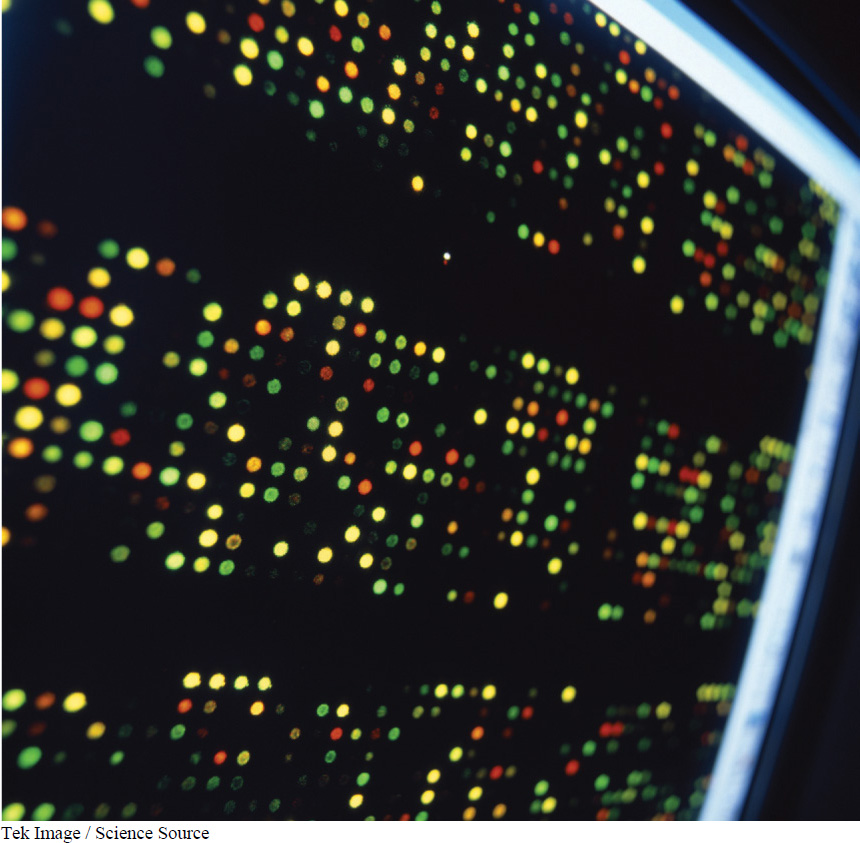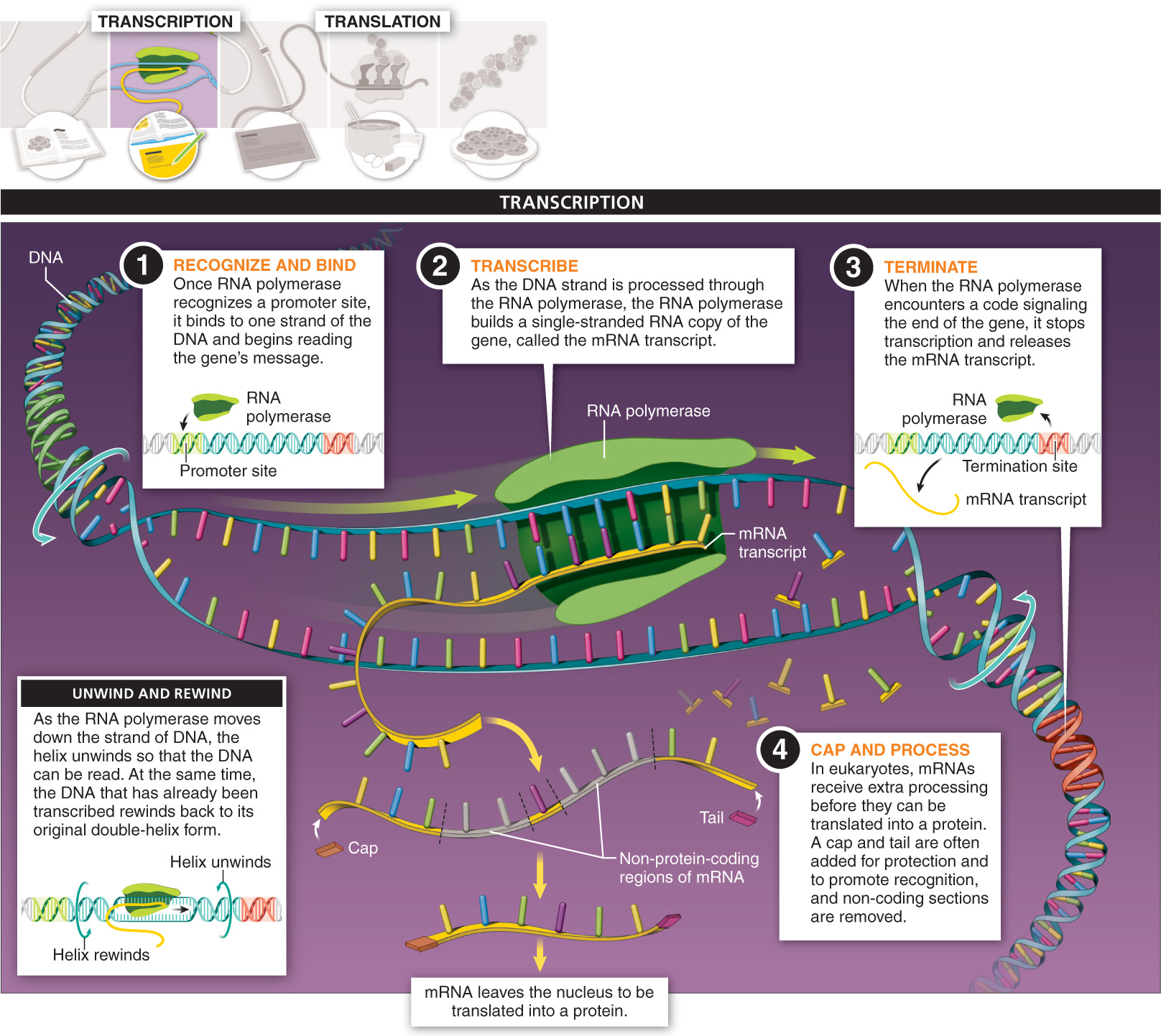
If DNA is like a cookbook filled with recipes, transcription and translation are like cooking. In cooking, you use information about how to make chocolate chip cookies to actually produce the cookies. In an organism, the information about putting together proteins is used to build the proteins that the organism needs to function. In this section, we examine transcription, the first step in the two-

Step 1. Recognize and bind. To start the transcription process, the enzyme RNA polymerase recognizes a promoter site, a sequence in a gene that indicates the start of the gene and, in effect, tells the RNA polymerase, “Start here.” RNA polymerase binds to the DNA molecule at the promoter site and unwinds it just a bit, so that only one strand of the DNA can be read.
Step 2. Transcribe. As the DNA strand is processed through the RNA polymerase, the RNA polymerase builds a copy—
The mRNA transcript is constructed from four different nucleotides, which have a structure similar to that of DNA nucleotides but with a different kind of sugar. Each pairs up with an exposed base on the unwound and separated DNA strand, following these rules:
If the DNA strand has a thymine (T), an adenine (A) is added to the mRNA.
If the DNA strand has an adenine (A), a uracil (U) is added to the mRNA.
If the DNA strand has a guanine (G), a cytosine (C) is added to the mRNA.
If the DNA strand has a cytosine (C), a guanine (G) is added to the mRNA.
189
Step 3. Terminate. When the RNA polymerase encounters a sequence of bases on the DNA at the end of the gene (called a termination sequence), it stops creating the transcript and detaches from the DNA molecule. After termination, the mRNA molecule is released as a free-
Step 4. Capping and editing. In prokaryotic cells, once an mRNA transcript is produced and begins to separate from the DNA it is ready to be translated into a protein (it doesn’t have a nuclear membrane to cross). In eukaryotes, mRNAs receive extra processing before they can be translated into a protein. First, a cap and a tail may be added at the beginning and end of the transcript. Like the front and back covers of a book, these serve to protect the mRNA from damage and help the protein-
190
TAKE-HOME MESSAGE 5.6
Transcription is the first step in the two-
Which ribonucleotides in an RNA molecule are added opposite the nitrogen-
If the DNA strand has a thymine (T), an adenine (A) is added to the mRNA. If the DNA strand has an adenine (A), a uracil (U) is added to the mRNA. If the DNA strand has a guanine (G), a cytosine (C) is added to the mRNA. If the DNA strand has a cytosine (C), a guanine (G) is added to the mRNA.